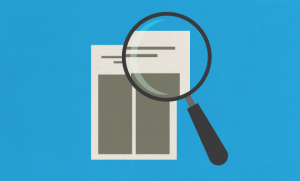Pay-to-view blacklist of predatory journals set to launch (original) (raw)
Private firm says its watchlist of untrustworthy journals will be objective and transparent — but not free.
The blacklist is dead; long live the blacklist. Five months after a widely read blog listing possible ‘predatory’ scholarly journals and publishers was shut down, another index of untrustworthy titles is appearing — although this version will be available only to paying subscribers.
Scholarly-services firm Cabell’s International in Beaumont, Texas, says that on 15 June it will launch its own list of predatory journals: those that deceive their authors or readers, for example by charging fees to publish papers without conducting peer review. The firm described its work on 31 May, at the annual meeting of the Society for Scholarly Publishing in Boston, Massachusetts.
The previous, now-defunct, list was run by academic librarian Jeffrey Beall of the University of Colorado Denver. Since 2010, he had tracked what he called “potential, possible or probable predatory scholarly open-access publishers” and journals on his blog, attracting huge attention and some legal threats from publishers unhappy at their inclusion. But in January this year, Beall deleted the site, without saying why. Cached copies have been posted elsewhere online.
By January, Cabell’s was well into the process of designing its own blacklist, says project manager Kathleen Berryman. The company already publishes a ‘whitelist’ of trustworthy journals, to which about 800 institutions subscribe; websites such as the Directory of Open Access Journals provide other whitelists. But Berryman says there’s also value in having a list to monitor for journals with bad business practices.
As of 26 May, the blacklist contains about 3,900 journals, she says, with more to come. It will be provided as an add-on to subscribers to the company's whitelist.
Clear criteria
Berryman says the firm was aware of complaints that Beall’s list wasn’t objective and that his criteria for including journals weren’t transparent. So Cabell’s uses some 65 criteria — which will be reviewed quarterly — to check whether a journal should be on its blacklist, adding points for each suspect finding. Examples include fake editors, plagiarized articles and unclear peer-review policies, says Berryman, although she declined to provide all criteria, saying that the firm would present them later in the year. A team of four employees checks for evidence that journals meet the criteria by searching online or contacting authors and journals for verification.
“It’s pretty much as scientific as we can get at this point,” she says.
Some of the publishers and journals listed by Beall aren’t on Cabell’s list, says Berryman. And Cabell’s has added new journals, including some that aren’t open access. The firm declined to provide details of the differences between its list and Beall's, but says that it will clearly state all the reasons that a journal is on its list. Berryman hopes that will limit libel suits. Publishers or journals will be able to contact Cabell’s to find out whether they are indexed, and will have the opportunity to appeal their status once a year.
Black and white
Some researchers say there’s little value in a blacklist. Cameron Neylon, who studies research communications at Curtin University in Perth, Australia, says such lists require a lot of work and will always miss some journals. He thinks that researchers should rely on whitelists of trustworthy journals, and that their training should cover how to judge journal quality.
But Natalia Zinovyeva, an economist at Aalto University in Helsinki who is studying the editorial processes of some of the journals that Beall once tracked, thinks Cabell’s list will be “extremely valuable” to funding or hiring committees without a wide level of expertise, who could use it as a tool to help evaluate researcher CVs.
And Beall, who was once an informal consultant for Cabell’s, says he thinks blacklists are still useful as a timesaving tool for authors who are deciding where to publish. Cabell's will probably find managing its appeals process one of its most difficult tasks, he says.
It’s unclear how many institutions or people will sign up once the list is released, but pricing will vary by institution. Cabell’s had originally planned to make the list free — and still hopes to do so eventually, Berryman says — but is charging to cover the costs involved in creating it.
Anyone wanting to produce their own watch list as a competing service will “quickly realize how much work and time goes into this”, says Berryman. “I don’t foresee us having competition.”
